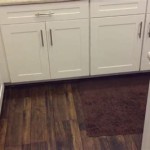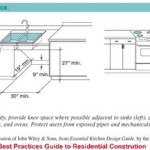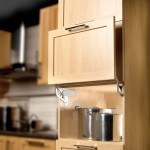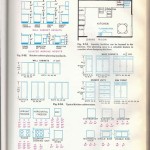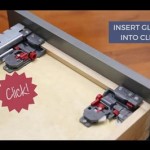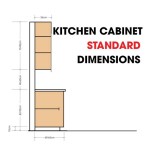Removing Laminate Kitchen Cabinets: A Step-by-Step Guide
Removing laminate kitchen cabinets is a task often undertaken during kitchen renovations or remodeling projects. While it may seem daunting, with careful planning, the right tools, and a methodical approach, it can be accomplished by a homeowner capable of DIY projects. This article provides a detailed guide to safely and effectively removing laminate kitchen cabinets.
Before commencing the removal process, several preparatory steps are crucial. These steps will ensure a safer and more efficient workflow, preventing damage to surrounding structures and the individual removing the cabinets. Thorough preparation minimizes potential complications and contributes to a smoother overall process.
The initial step is to disconnect all utilities connected to appliances housed within or near the cabinets. This includes shutting off the main water supply if the kitchen sink plumbing is integrated with the cabinet structure. Similarly, the electrical circuit breaker supplying power to any outlets or appliances built into the cabinetry should be switched off. Gas lines, if present for ovens or stovetops, must also be properly shut off by a qualified professional. This is a non-negotiable safety precaution. Failing to disconnect utilities can result in serious injury or property damage.
Following utility disconnection, the next step involves clearing the cabinets of all contents. This includes dishes, cookware, food items, and any other stored items. Emptying the cabinets not only lightens the load during removal but also prevents items from falling and breaking during the process. Use boxes or containers to organize the contents, labeling each box clearly to facilitate efficient restocking in the new kitchen or storage area. Pay particular attention to fragile items, cushioning them adequately to prevent breakage.
Protective measures are also essential. Cover the countertops and flooring around the cabinets with drop cloths or protective sheeting. This will safeguard these surfaces from scratches, dents, and other damage that can occur during the removal process. Wear safety glasses to protect the eyes from dust and debris, and work gloves to protect the hands from sharp edges or splinters. A dust mask is also recommended, especially if the cabinets are old or if the work area is not well-ventilated.
Gathering the necessary tools is another critical pre-removal activity. Essential tools include a screwdriver set (both Phillips head and flathead), a drill/driver with various bits, a pry bar, a utility knife, a hammer, a level, a stud finder, and a pencil. A reciprocating saw can be helpful for cutting through caulk or adhesives, especially in older installations. Having all the required tools readily available will save time and prevent frustration during the removal process.
Key Point 1: Removing Upper Cabinets
Upper cabinets are typically the first to be removed, as their removal simplifies access to the lower cabinets and reduces the risk of damage to the lower units if an upper cabinet were to fall unexpectedly. The process involves carefully detaching the cabinets from the wall while ensuring their stability to prevent accidents.
The first step in removing upper cabinets is to locate the mounting screws. These screws are usually located inside the cabinet, hidden behind shelves or panels. A stud finder can be used to identify the wall studs to which the cabinets are attached. Use a drill or screwdriver to remove these screws. It is often helpful to have an assistant hold the cabinet while the screws are being removed, especially for larger or heavier cabinets. This prevents the cabinet from suddenly falling once the screws are detached.
Once the screws are removed, the cabinet may still be attached to the wall with caulk or adhesive. Use a utility knife to carefully score along the top and sides of the cabinet where it meets the wall. This will break the seal and allow the cabinet to be more easily removed. Insert a pry bar between the cabinet and the wall, gently prying the cabinet away from the wall. Work slowly and carefully to avoid damaging the wall or the cabinet itself, if the intention is to reuse the cabinet later.
Once the cabinet is detached from the wall, carefully lift it down. If the cabinet is heavy, have an assistant help with the lifting. Place the cabinet on a protected surface to prevent damage. Repeat this process for all the upper cabinets in the kitchen. Remember to label each cabinet as it is removed, noting its location in the kitchen. This will be helpful if the cabinets are to be reinstalled in the same or a different location.
After removing the upper cabinets, inspect the wall for any damage. Repair any holes or cracks before proceeding with the removal of the lower cabinets. Patching holes and cleaning the wall surface now will make the preparation for new cabinets, or any other project, go smoother.
Key Point 2: Removing Lower Cabinets
Lower cabinets, also referred to as base cabinets, are removed after the upper cabinets. They are typically secured to the wall and the floor, and may also be connected to the countertop. Removing lower cabinets requires a slightly different approach than removing upper cabinets.
Begin by disconnecting any plumbing or electrical connections located within the lower cabinets. This includes disconnecting the sink drain and water supply lines, as well as any electrical wiring for dishwashers or garbage disposals. Ensure that the utilities are turned off before disconnecting them. Cap off any exposed pipes or wires to prevent leaks or electrical hazards. This step may require a qualified plumber or electrician if the connections are complex or unfamiliar.
Next, remove the countertop. The countertop may be attached to the lower cabinets with screws, adhesive, or clips. Locate the fasteners and remove them using a screwdriver or drill. If the countertop is glued to the cabinets, use a utility knife to carefully score along the edges where the countertop meets the cabinets. A pry bar may be needed to gently separate the countertop from the cabinets.
Once the countertop is removed, locate the mounting screws that secure the lower cabinets to the wall and the floor. These screws are usually located inside the cabinet, near the top and bottom. Use a drill or screwdriver to remove these screws. Some cabinets may also be attached to each other with screws or clips. Remove these fasteners as well.
After removing the mounting screws, use a pry bar to gently detach the cabinets from the wall and the floor. Work slowly and carefully to avoid damaging the wall or floor. If the cabinets are heavy, have an assistant help with the lifting. Once the cabinets are detached, carefully lift them out and place them on a protected surface. As with the upper cabinets, label each lower cabinet with its location in the kitchen.
After removing the lower cabinets, inspect the wall and floor for any damage. Repair any holes or cracks before proceeding with any further renovation or remodeling work. Clean the floor to remove any debris or adhesive residue. Thorough cleaning ensures a clean and prepared surface for the installation of new cabinets or other flooring materials.
Key Point 3: Dealing with Islands and Peninsulas
Kitchen islands and peninsulas present unique challenges when removing cabinets. These structures are often more complex, with multiple cabinets connected together and potentially containing plumbing or electrical connections. A careful and methodical approach is crucial for safely and effectively removing these units.
As with other cabinets, the initial step is to disconnect all utilities. This includes disconnecting any plumbing for sinks or dishwashers located in the island or peninsula, as well as any electrical wiring for outlets or appliances. Ensure that the utilities are turned off before disconnecting them, and cap off any exposed pipes or wires. Due to the potential complexity of plumbing or electrical configurations within islands or peninsulas, seeking professional assistance is often advisable.
Next, remove the countertop. The countertop may be attached to the cabinets with screws, adhesive, or clips. Locate the fasteners and remove them using a screwdriver or drill. If the countertop is glued to the cabinets, use a utility knife to carefully score along the edges where the countertop meets the cabinets. A pry bar may be needed to gently separate the countertop from the cabinets. Countertops on islands and peninsulas are frequently larger and heavier than those on standard cabinets, requiring additional care and assistance during removal.
Once the countertop is removed, locate the mounting screws or fasteners that secure the cabinets to the floor and to each other. These screws are usually located inside the cabinets, near the bottom. Use a drill or screwdriver to remove these screws. Some islands and peninsulas may also be attached to the wall with screws or brackets. Remove these fasteners as well.
After removing the fasteners, carefully detach the cabinets from the floor and from each other. Use a pry bar to gently separate the cabinets. If the island or peninsula is large or heavy, it may be necessary to disassemble it into smaller sections for easier removal. This can be done by removing the screws or fasteners that connect the individual cabinets together. Label each section as it is removed, noting its location in the island or peninsula. This will be helpful if the cabinets are to be reinstalled in the same or a different location.
After removing the island or peninsula, inspect the floor for any damage. Repair any holes or cracks before proceeding with any further renovation or remodeling work. Clean the floor to remove any debris or adhesive residue. Special attention may be required to address any plumbing or electrical connections that were previously hidden within the island or peninsula.
Following the removal of all cabinets, a final cleanup of the work area is essential. Dispose of any debris, such as screws, nails, caulk, or adhesive residue. Sweep or vacuum the floor to remove any dust or dirt. Inspect the walls and floor for any remaining damage and make any necessary repairs. This comprehensive cleanup ensures a safe and prepared environment for the next phase of the kitchen renovation or remodeling project.
By adhering to these detailed steps and prioritizing safety, the removal of laminate kitchen cabinets can be performed successfully. Remember to take your time, use the proper tools, and seek professional assistance when necessary. Thorough preparation and a methodical approach are key to achieving a positive outcome.

Painting Laminate Kitchen Cabinets Cuckoo4design

How To Remove Laminate From Cabinets

How To Remove Laminate From Cabinets

Painting Laminate Kitchen Cabinets Cuckoo4design

How Do You Paint Laminate Kitchen Cupboards When They Re Ling Hometalk

How To Remove Laminate From Cabinets

Removing Melamine The Plastic Stuff On Cabinets

How Do I Fix Laminate Cabinets Hometalk

How To Remove Laminate From Cabinets

How To Remove Kitchen Cabinets Budget Dumpster
Related Posts

